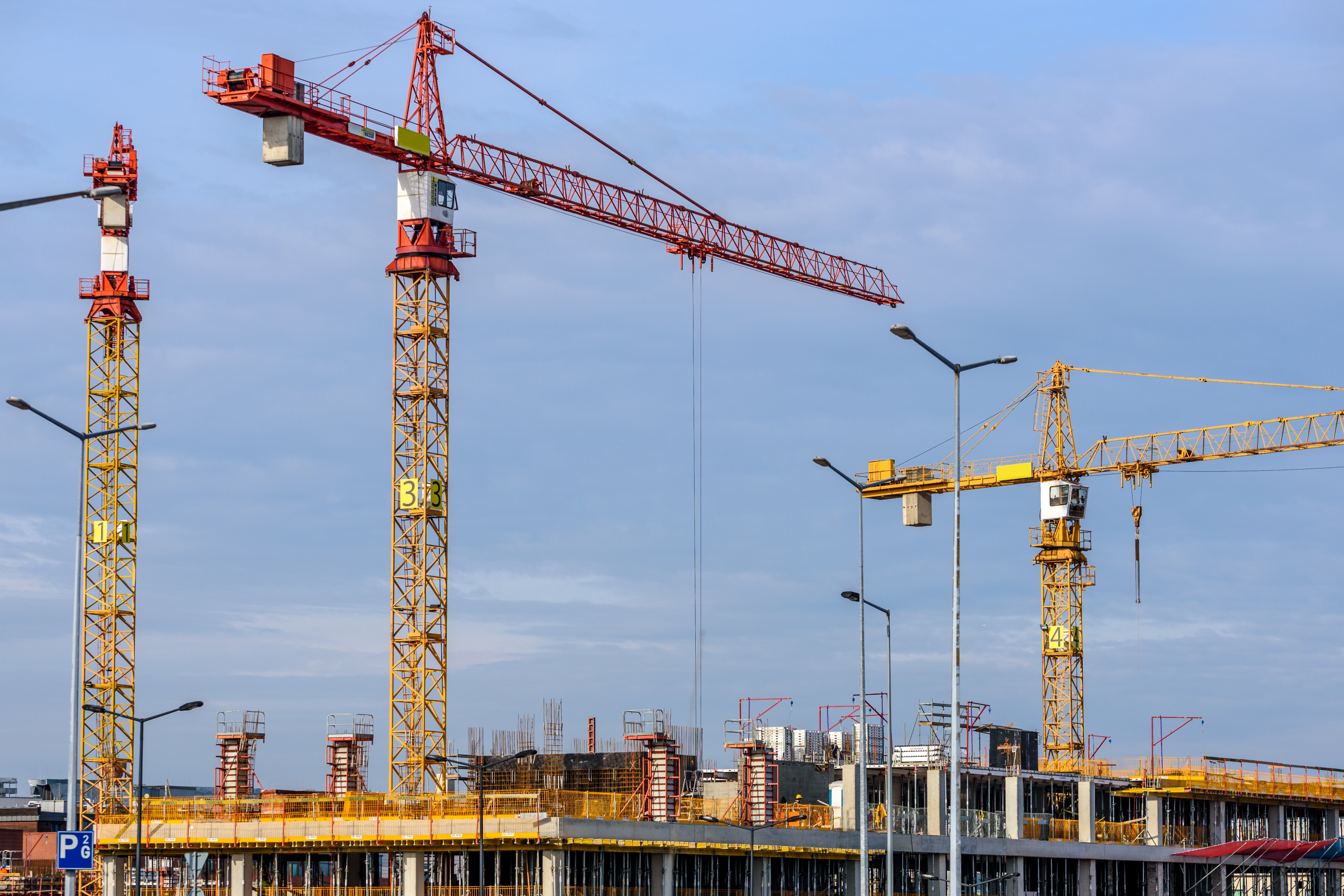Why Are Cranes Used In Construction ? This article looks at how cranes work and the different types available.
How does a Crane work?
Modern cranes come in a wide range of different types, and you can utilise them in several ways to assist construction work on-site and make the jobs and tasks at hand much faster or more straightforward.
Cranes lift objects because their loads are often offset by counterweights that help stabilise your crane and allow them to lift materials and equipment and move them around the job site.
What features & capabilities do different types of cranes have?
Many categories and crane types exist today for many construction workers to hire, all of which have various functions and features. There are:
Aerial cranes
Overhead cranes
Deck cranes
Hammerhead tower cranes
Giant cantilever cranes
Bridge cranes
Loader cranes
Floating cranes
Telescopic cranes
Balance cranes and so many more
A contract lifting service or crane hire company offers plenty of machinery and equipment, and it's best to understand the complete abilities of those you consider purchasing or hiring.
Here are some of the aspects we highly recommend you consider before buying:
| Lifting Capacity | Consider how much weight your project requires concerning the crane lift you wish to purchase. |
| Lifting Range | Where do your loads and equipment need to be lifted? |
| Lift Angle | The lift capacity often decreases the higher your angle of lift reaches, so you must consider your desired angle. |
| Working Radius | Consider the size of the area you require the crane lift for. |
| Mobility | Is a mobile tower crane necessary? Consider how much space your project site offers and whether or not your workers will need to move around a lot. |
| Weight and Dimensions | The sheer mobility and size of your hired crane must fit the construction site restrictions or load limits; confined spaces require specific types of cranes. |
| Setup Time | Many projects need any significant equipment or machinery to be assembled and erected within a fast setup time to continue the work quicker. Mobile tower cranes would massively benefit a site that is short on time. |
| Night Working | You will require appropriate, robust lighting equipment and much quieter crane operations if you are working on a building project throughout the night. |
What is the work of a crane on construction sites?
When on a construction site, the primary purpose of cranes is to help hoist up numerous materials needed to complete a project.
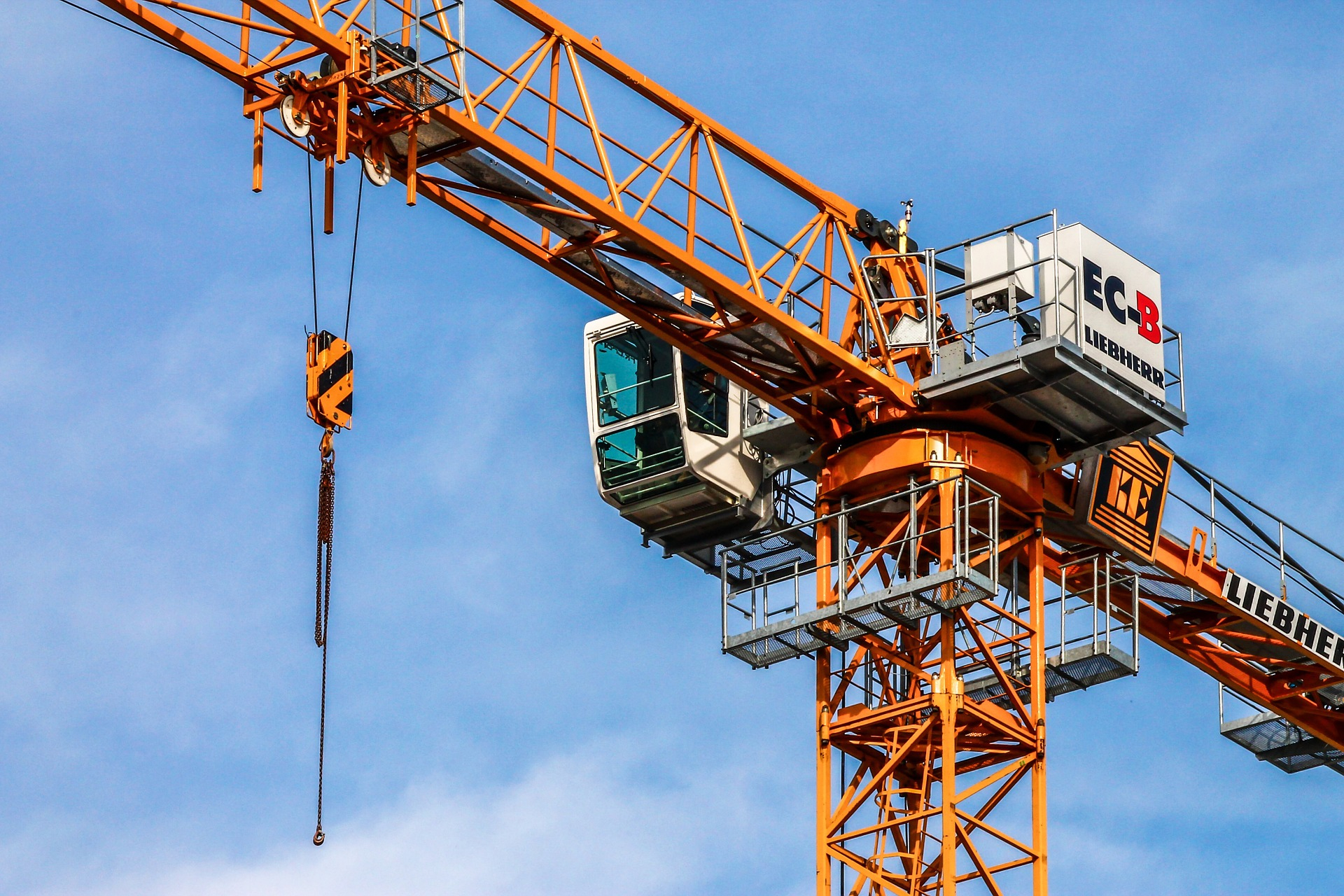
The most popular crane used on construction sites is the tower crane; they come in a wide range of styles and offer a wide range of advantages, such as the following: When your builders have constructed and fully assembled, you can use them liberally throughout your project.
They require minimum maintenance to upkeep. They occupy small areas and are ideal for sites or projects that do not require much movement, meaning there is little disturbance to other machinery or activities .It has a much greater range than other bulk handling cranes because it has a more extensive horizontal beam.
Static Cranes vs Mobile Cranes
Professionals use two specific construction and heavy-duty cranes categories: mobile cranes and static cranes.
Static cranes are semi-permanent or permanent structures that have been fixed to buildings or the ground; they lift and move heavy loads along particular fixed paths. Mobile cranes are mounted onto wheels or treads, which you can move between different job sites.
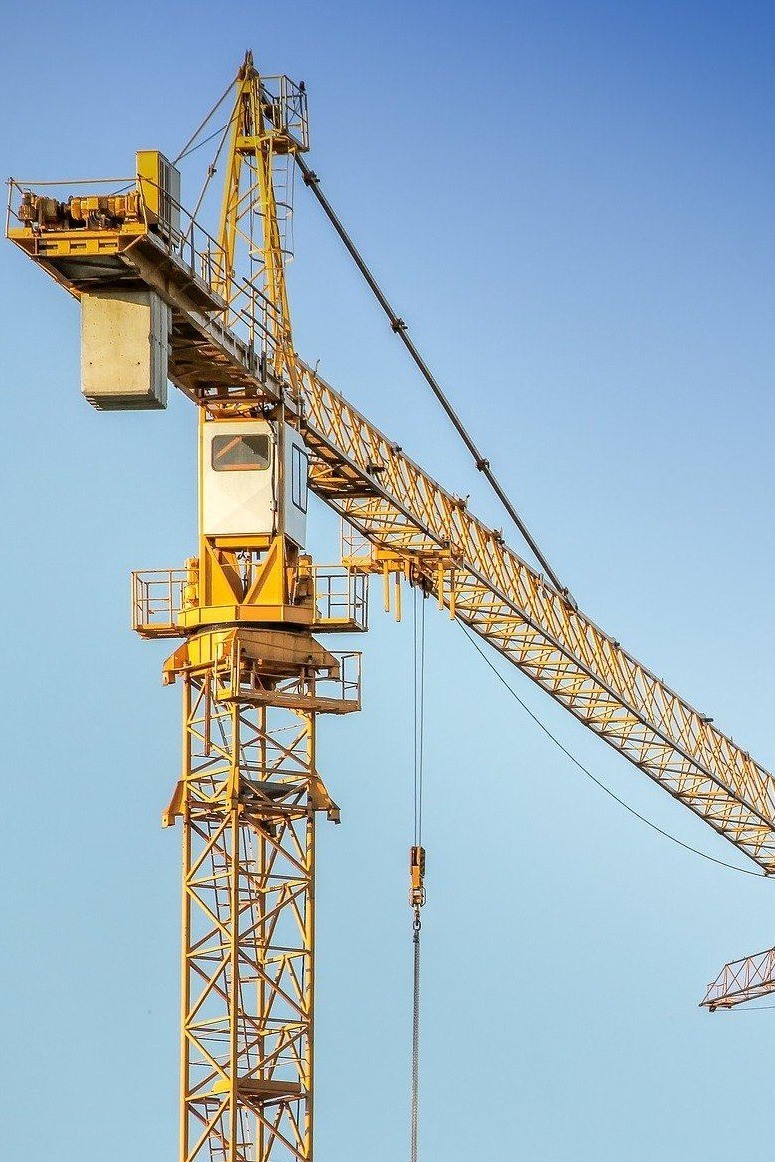
Many mobile cranes aren't restricted specifically to fixed paths in the way static cranes are. However, some mobile cranes can pick and carry due to an exciting function that allows them to lift loads and carry them to other locations with their wheels or treads. Mobile cranes need outriggers, on-site assembly or counterweights.
Different Types of Cranes

Mobile Cranes
Mobile cranes can be successfully moved within and around tight and rough areas and sites, enabling professionals to have plenty of flexibility whilst working on a project. Many mobile cranes can be track-mounted, gantry-based, boom truck-mounted or mobile wheeled.
Crawler cranes are similar to mobile cranes, yet they have a lifting capacity of around 3,000-tonnes with their movable hoist heights and lattice booms that allow them to lift such heavy loads across rough terrains.
Mobile wheeled cranes
Mobile wheeled cranes have been skilfully mounted onto a wheeled chassis with stabilisers utilised to prevent movement when lifting cargo or heavy loads, like large rubber tires. Generally, rough terrain cranes are driven and controlled by experienced operators.
The slewing ring in the cab undercarriage enables operators to perform 360-degree turning circles on-site, and it has an extending boom-mounted supported by suspension ropes. Typically, its lifting capacity varies between 3-50 tonnes.
On-site workers tend to use mobile wheeled cranes to move moderately heavy equipment, loads, and other items across all terrains.
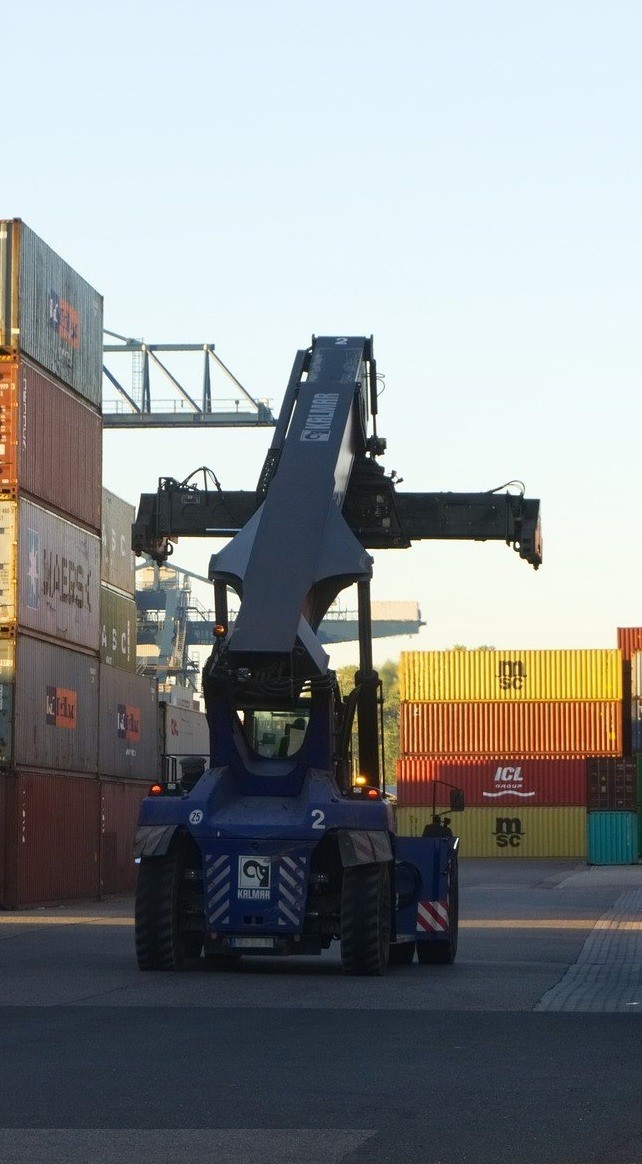

Truck-mounted cranes
Truck-mounted cranes are mounted atop lorries and carefully curated trucks to carry increased loads. Professionals on-site can drive these lorries like a conventional vehicle from its front cab.
They all utilise the additional controls for telescopic boom or lattice mast-mounted cranes, which extend in sections. Its lifting capacity varies between 5-2,000 tonnes; however, its most common capacity is 35- 100 tonnes.
These cranes are incredibly transportable and have a relatively short preparation time, commonly used for short-term construction jobs and projects.
Gantry crane
Gantry cranes are also referred to as portal cranes by many in the construction industry, and it is equipment consisting of two frames that straddle the work area, connected with lattice cross member.
From horizontal cross member, the lifting gear gets suspended, and thus, it can move freely along its rails. The first frame is wheel mounted for small gantry cranes, whereas much larger cranes get mounted onto powered bogies running on rail tracks.

Much larger cranes often have lifting mechanism gear mounted on the cross member using a driving cab. Hydraulic cranes utilise hydraulic cylinders with hydraulic mechanisms that will allow them to hoist up heavy materials. Small cranes have a lifting capacity of 10-tonnes; however, more extensive crane arms tend to lift approximately 100-tonnes.
Such crane forms are most used for low to medium-rise projects and developments or stockyards, moving materials and equipment for those with relatively repetitive work that requires back and forth loading up and moving about.

Static cranes
Whilst it has an incredibly similar likeness to more traditional tower cranes, static cranes widely differ due to the lattice mast-mounted onto your slewing unit or ring, allowing the entire tower to rotate from its fixed positions.
Static cranes are fitted using luffing jib or level bluffing crane, of which you can raise 90 degrees with a hoist block and trolley that you can move along the entire length of the jib arm. Its lifting capacity tends to vary depending on the counter jib length that you are working with.
These cranes are often ideal for low capacity lifting projects, and they allow for a relatively beneficial closer approach to a building.
Tower cranes
Tower cranes are one of the industry's most familiar sights that you could encounter on any construction project. They are often fully assembled and erected on construction sites using luffing or horizontal jibs. Its most notable features include:
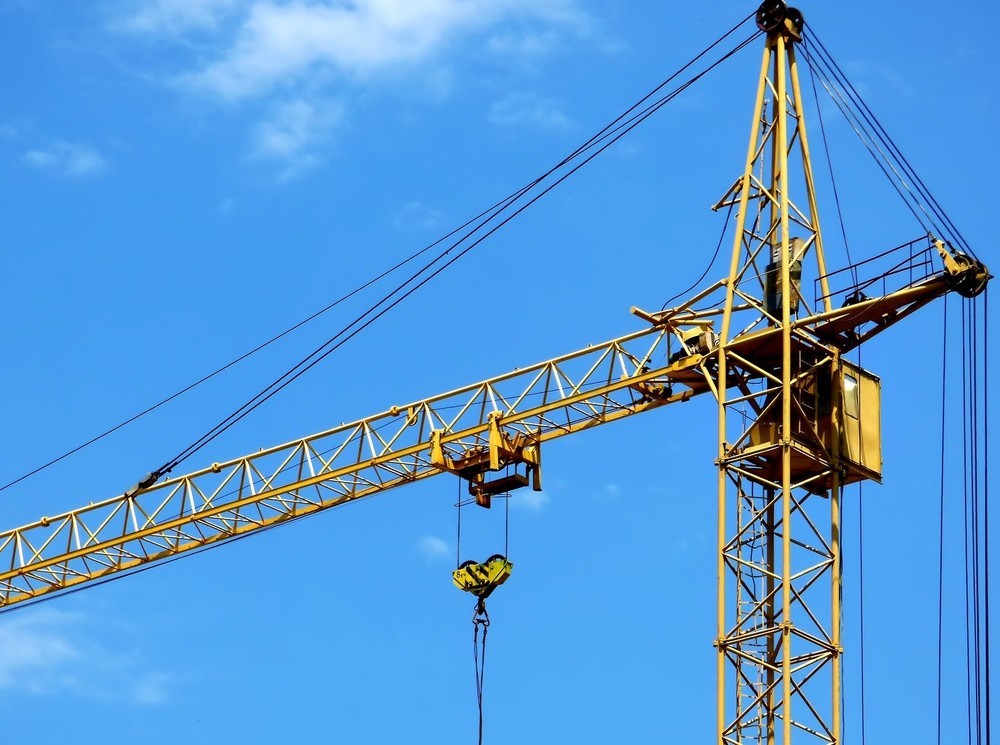
A 25m long jib that has been fitted with precast concrete counterweight blocks.
Lattice sectionalise tower.
A robust support frame with stay rods.
Access ladders attached to an outside face or within the tower.
A slewing ring, allowing your jib to rotate.
A cab for an operator to sit at the top of the tower.
Tower crane operators can oversee plenty of lifting operations whilst perched in the cab; however, banksmen are required to stay at ground level to oversee the freight loading of cranes, give guidance, and issue any significant signals.
Tower cranes are available for construction projects in numerous forms, for example:
| Self-supporting static | Such towers are usually 30m tall and use reinforced concrete bases or mass to ensure they are anchored at ground level with floor-mounted pillars. If the ground conditions are poor, professionals may utilise piles to level it out more. With the trolley carrying 1 tonne at its minimum radius at the jib's end, its lifting capacities range from 2.5 tonnes. Such tower cranes are most suitable for confined spaces and sites with little room for travelling cranes or machinery. |
| Supporting static | These are similar to any self-supporting or self-erecting tower crane you may find on-site; however, it is best utilised in places where high lifts are needed. Often the tower will be tied to the face of your desired structure at reasonable intervals and a distance of 2 metres at minimum to gain further stability. Doing so will help induce additional stresses on your structure, and therefore, professionals must accommodate these features in its overall design. |
| Travelling or rail-mounted | Travelling or rail-mounted tower cranes are suitable for those that struggle with accommodating static cranes. The base helps support the tower with its precast concrete ballast blocks skillfully placed on both sides evenly. The concrete blocks get mounted onto heavy-wheeled bogies moving along rail tracks placed on ballasts and sleepers. |
| Climbing | These tower cranes are best suited for constructing tall buildings and structures. Its tower should be erected and raised inside the project structure as it increases throughout construction. |
If you require crane hire services in the Kent, London or South England areas, we can help. Our crane and lifting services are based in Gravesend but we can work throughout the UK.

